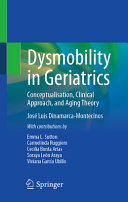

Most ebook files are in PDF format, so you can easily read them using various software such as Foxit Reader or directly on the Google Chrome browser.
Some ebook files are released by publishers in other formats such as .awz, .mobi, .epub, .fb2, etc. You may need to install specific software to read these formats on mobile/PC, such as Calibre.
Please read the tutorial at this link: https://ebookbell.com/faq
We offer FREE conversion to the popular formats you request; however, this may take some time. Therefore, right after payment, please email us, and we will try to provide the service as quickly as possible.
For some exceptional file formats or broken links (if any), please refrain from opening any disputes. Instead, email us first, and we will try to assist within a maximum of 6 hours.
EbookBell Team

5.0
90 reviewsIt is a conceptual and practical book at the same time. From the redefinition of the classic geriatric syndrome of Immobility, a concept of deep clinical interest is developed: Dysmobility. Moreover, a specially developed methodology is delivered to maximise the benefits for the patient, clinicians, and caregivers. Both the concepts and the methodology are discussed in a clear, precise, and practical manner to be applied in the daily clinical practice in Geriatrics.
Dysmobility is defined in its three diagnostic axes, including the official updated version of D-STAGING (known as ETADI in Spanish), the motor continuum staging that revolutionised the clinic with its advent. Additionally, the requirements and criteria necessary for its correct application and use are explained conceptually step by step, and practically with clinical cases. Along with this, the new possibilities that arise from this conceptualisation and methodology are addressed, particularly in the field of comparative medicine and clinical research. Finally, the bases of a new theory of aging, the Movement-Time theory or theory of Dysmobility, are presented.
This work will support physicians from different medical specialties, such as geriatricians, physiatrists, family doctors, geriatric dentists, and health professionals from the interdisciplinary team like gerontologists, nurses, kinesiologists/physiotherapists, psychologists, speech therapists, occupational therapists, nutritionists and social workers. It will also be of interest to students of health-related professions, resident physicians for different specialties, and researchers in mobility and rehabilitation.